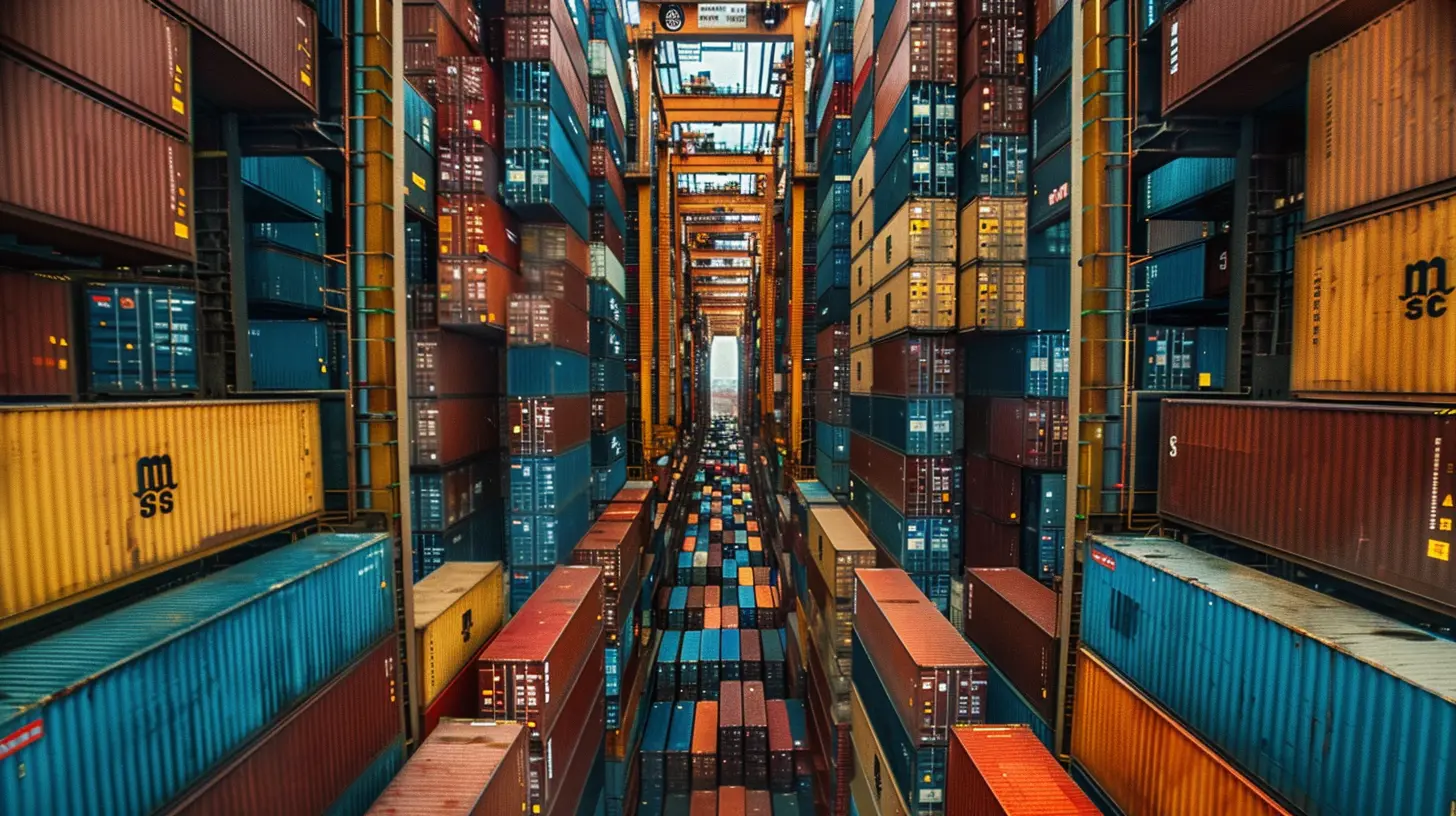How to Optimize Your Supply Chain for Lower Costs
16 June 2025
Supply chains are the backbone of any business. Whether you're running a small e-commerce store or managing a large manufacturing operation, an efficient supply chain can make or break your bottom line. The goal? Cut costs without sacrificing quality or efficiency.
But how do you do that? Well, optimizing your supply chain isn't just about trimming expenses—it's about making smarter decisions at every stage of the process. Let's break it down step by step.

1. Analyze Your Current Supply Chain
Before you start making changes, you need to know exactly where you stand. Think of your supply chain as a roadmap—if you don't know your starting point, you can't find the best route to your destination.Ask yourself:
- Where are the bottlenecks?
- Which areas are costing the most money?
- Are suppliers meeting deadlines, or are delays costing you revenue?
- Are you utilizing warehouse space efficiently?
A thorough audit will help you identify weak spots and areas where you can save money. Use data analytics tools to get real insights into costs, delivery times, and inefficiencies.

2. Build Stronger Relationships with Suppliers
Your suppliers play a huge role in the cost and efficiency of your supply chain. If you're constantly jumping between suppliers to get the cheapest deal, you could actually be increasing costs over time. Instead, try building long-term, reliable partnerships.Why? Because strong relationships mean better negotiations, priority service, and even potential discounts. If you can consolidate orders with fewer suppliers, you may also save on shipping and handling fees.
Tips for Supplier Optimization:
- Negotiate better rates – If you’ve been a loyal customer, ask for discounts or bulk pricing.- Diversify but don’t overcomplicate – Relying on a single supplier is risky, but dealing with too many vendors can be inefficient.
- Implement vendor scorecards – Track supplier performance based on delivery speed, quality, and cost.

3. Streamline Inventory Management
Holding too much inventory ties up capital, while too little inventory can lead to lost sales. Striking the right balance is key.How to Optimize Inventory:
- Use Just-in-Time (JIT) inventory – Keep only what you need when you need it. This reduces storage costs and minimizes waste.- Implement automated tracking – Use inventory management software to track stock levels in real time.
- Adopt demand forecasting – Use data analytics to predict demand spikes and seasonal fluctuations.
Proper inventory management ensures you’re not overstocking or understocking, both of which can eat into your profits.

4. Invest in Supply Chain Automation
Automation isn't just for tech giants—it’s for any business looking to cut costs and improve efficiency. From warehouse management systems to AI-driven logistics planning, automation helps eliminate manual errors and speeds up operations.Automated Solutions to Consider:
- Warehouse Management Systems (WMS) – Optimize space and streamline picking and packing.- AI-powered logistics – Route optimization software can cut down transportation costs.
- Robotic Process Automation (RPA) – Automate routine tasks like order processing and invoicing.
By reducing human error and increasing speed, automation ensures a more efficient supply chain.
5. Optimize Transportation and Logistics
Shipping and transportation are major cost centers in any supply chain. But with the right strategies, you can keep these costs in check.Tips for Reducing Transportation Costs:
- Consolidate Shipments – Shipping in bulk instead of frequent small batches reduces costs.- Use Multimodal Transport – A mix of air, rail, and road transportation can reduce costs based on what’s most efficient.
- Negotiate with Carriers – Optimize freight contracts to get better rates.
- Route Optimization – Smart logistics software can find the shortest, most efficient routes.
Logistics is all about getting products from A to B in the fastest, most cost-effective way possible. Making smart decisions here can result in big savings.
6. Reduce Waste and Improve Sustainability
Cutting supply chain costs doesn’t just mean saving money—it also involves reducing waste. Sustainable supply chains aren't just good for the environment; they’re also good for your budget.How to Reduce Waste:
- Optimize packaging – Use the right size and type of packaging to reduce material usage and shipping expenses.- Adopt eco-friendly suppliers – Working with sustainable vendors can reduce costs in the long run.
- Recycle and reuse – Implement programs that allow materials to be repurposed rather than discarded.
A more sustainable supply chain eliminates waste, reduces costs, and boosts your brand’s reputation.
7. Leverage Data and Predictive Analytics
If you’re not using data to guide your supply chain decisions, you’re likely leaving money on the table. Predictive analytics helps businesses anticipate demand, plan inventory, and adjust logistics—all while keeping costs under control.Benefits of Predictive Analytics:
- Demand Forecasting – Know when and where products will be needed.- Supplier Performance Tracking – Identify which vendors deliver on time and maintain quality standards.
- Cost Optimization – Find trends and patterns in expense data to see where you can save.
Using real-time data allows for proactive decision-making rather than reactive fixes.
8. Train Your Workforce and Improve Collaboration
A well-trained team can make all the difference when it comes to supply chain optimization. Employees who understand the importance of cost reduction and efficiency will be more proactive in spotting and fixing issues.How to Improve Workforce Efficiency:
- Provide ongoing training – Keep employees updated on best practices and new technologies.- Improve internal communication – Ensure departments work together seamlessly, avoiding costly miscommunications.
- Encourage innovation – Employees often have great ideas for improving efficiency—give them a platform to share.
A smarter, well-trained team means fewer mistakes, faster turnaround times, and ultimately, lower costs.
The Bottom Line
Optimizing your supply chain isn’t just about cutting corners—it’s about making smarter, more strategic decisions at every stage. From better supplier relationships to automation and logistics improvements, every small change adds up to significant cost savings.The key is to keep your supply chain flexible and efficient. In today’s competitive market, businesses that streamline their supply chains will have the edge—not just in cost savings, but also in delivering better service to their customers.
all images in this post were generated using AI tools
Category:
Cost ManagementAuthor:

Remington McClain
Discussion
rate this article
2 comments
Carla Lozano
Great insights! Optimizing the supply chain can really make a difference in cutting costs and boosting efficiency. It’s all about finding those small changes that lead to big savings. Excited to implement some of these tips in our operations!
November 13, 2025 at 5:40 AM

Remington McClain
Thank you! I'm glad you found the tips helpful. Wishing you great success in optimizing your supply chain!
Wendy Blevins
Why did the supply chain bring a ladder? To reach new heights of savings!
June 17, 2025 at 3:35 AM

Remington McClain
Great pun! Optimizing the supply chain truly can lead to reaching new heights in cost savings. Thanks for sharing!


